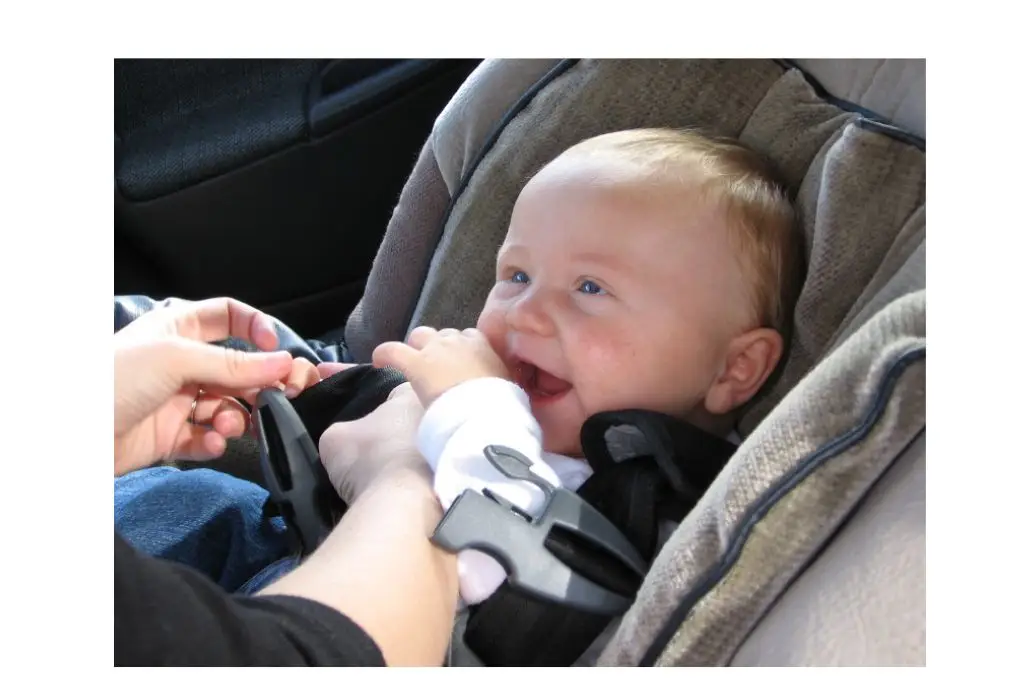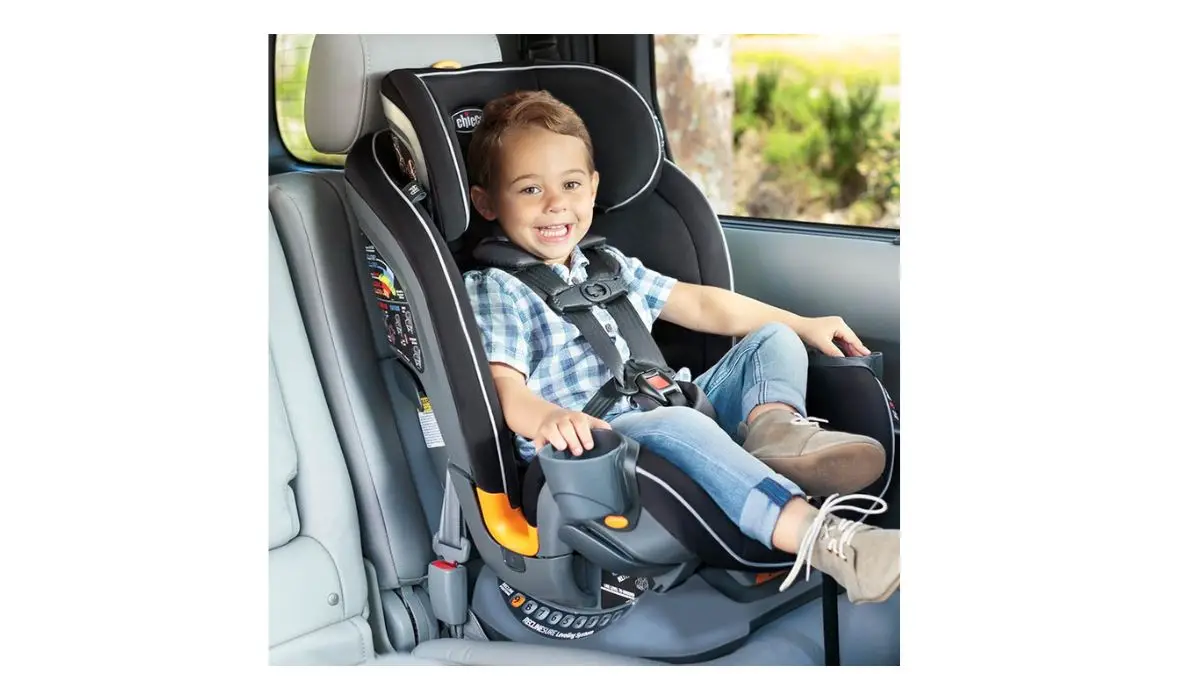Switch to a forward-facing car seat when your child outgrows the rear-facing seat’s height or weight limit. Typically, this happens around age two.

Car seat safety is crucial for protecting young children during car rides. Parents often wonder when it’s appropriate to transition from a rear-facing car seat to a forward-facing one. The general recommendation is to keep your child in a rear-facing seat as long as possible.
This position offers the best protection in case of a crash. Typically, children outgrow their rear-facing seats around age two but always refer to the specific weight and height limits set by the car seat manufacturer. Ensuring you follow these guidelines can significantly enhance your child’s safety on the road.
Signs Of Readiness
Switching to a forward-facing car seat is a big step for your child. Understanding the right time to make this switch is crucial for their safety. There are clear signs that show when your child is ready. These signs can be divided into physical development and behavioral cues.
Physical Development
Your child’s physical growth is a key indicator. Height and weight limits set by the car seat manufacturer are important. Most rear-facing seats have a weight limit of 40 pounds.
Check the height limit as well. The top of your child’s head should be at least one inch below the top of the car seat. Once they exceed these limits, they are ready for a forward-facing seat.
- Weight limit: 40 pounds
- Height limit: Top of the head one inch below the seat top
Children also need to have strong neck muscles. This helps them handle the impact of sudden stops. Age is another factor. Most experts recommend waiting until your child is at least two years old. This ensures they have developed enough physically.
Behavioral Cues
Behavioral signs also play a role. If your child can sit still for longer periods, they might be ready for a forward-facing seat. Restlessness in a rear-facing seat can indicate readiness.
Your child should also follow simple instructions. If they can understand and follow safety rules, it’s a good sign. Frequent complaints about discomfort in the rear-facing seat are another indicator. These cues, combined with physical readiness, help determine the right time to switch.
- Sitting still for longer periods
- Understanding and following instructions
- Complaints about discomfort in the rear-facing seat
Legal Guidelines
Switching to a forward-facing car seat is a crucial step in your child’s safety journey. Legal guidelines help parents decide when to make this switch. It is important to know these rules to ensure the safety of young passengers.
Regulations On Weight And Height
Car seat regulations focus on your child’s weight and height. These factors decide the right time to switch. Most guidelines suggest waiting until your child is at least 2 years old. This is because younger children are safer in rear-facing seats.
Weight and height limits vary by car seat model. Always check the manufacturer’s instructions. Here are some general guidelines:
- Rear-facing seats: up to 40 pounds
- Forward-facing seats: 20 to 65 pounds
- Booster seats: over 65 pounds
Height limits are also important. A child’s head should be at least one inch below the top of the car seat. This ensures proper protection in case of a crash.
Using a table can help parents understand the switch better:
| Type of Seat | Weight Limit | Height Limit |
| Rear-Facing | Up to 40 pounds | Up to 40 inches |
| Forward-Facing | 20 to 65 pounds | Up to 49 inches |
| Booster | Over 65 pounds | Over 49 inches |
State-specific Laws
Each state has its car seat laws. These laws ensure the safety of children on the road. Parents must follow these laws to avoid penalties.
Here are some examples of state-specific car seat laws:
- California: Children under 2 years must be in a rear-facing seat unless they weigh over 40 pounds.
- New York: All children under 4 years must use a car seat, and those under 8 must use a booster.
- Texas: Children under 8 years must be in a car seat unless they are taller than 4 feet 9 inches.
Parents should always check their own state’s requirements. These laws can change, so staying updated is crucial.
State websites often provide detailed information. Visiting these sites can give you the most current guidelines.
Safety Considerations
Switching to a forward-facing car seat is a significant milestone for both children and parents. It is crucial to understand the right time and circumstances for this transition to ensure the utmost safety of your child. Safety considerations should always be at the forefront of this decision. This blog will delve into the impact of forward-facing seats and the importance of their proper installation.
Impact Of Forward-facing
Transitioning to a forward-facing car seat comes with both benefits and risks. Forward-facing seats provide better visibility for the child, allowing them to see more of their surroundings. This can be a more engaging and enjoyable experience for them.
However, forward-facing seats offer less protection in the event of a crash compared to rear-facing seats. Rear-facing seats support the head, neck, and spine better during collisions. This is particularly important for younger children whose bodies are still developing.
Experts recommend keeping children in rear-facing seats until at least the age of 2 or until they reach the maximum height and weight limit allowed by the car seat manufacturer. Here are some general guidelines to follow:
- Check the car seat’s height and weight limits.
- Ensure the child fits within these limits before making the switch.
- Consult with your pediatrician for personalized advice.
Proper Installation
Proper installation of a forward-facing car seat is crucial for safety. Incorrect installation can lead to serious injuries in the event of an accident. Follow these steps to ensure your car seat is installed correctly:
Step 1: Read the car seat manual thoroughly. Each car seat has specific instructions that must be followed.
Step 2: Place the car seat in the back seat of your vehicle. This is the safest location for children.
Step 3: Use the tether strap. Secure it to the designated anchor point in your vehicle. This helps prevent the seat from tipping forward in a crash.
Step 4: Install using the LATCH system or seat belt. Make sure the car seat does not move more than an inch from side to side or front to back.
Step 5: Double-check the installation. Ensure that the seat is at the correct recline angle and that all straps are tight and secure.
Many local fire stations or police departments offer free car seat inspections. Take advantage of these services to ensure your child’s car seat is installed correctly.
Consulting Experts
Choosing the right car seat for your child is crucial for their safety. Parents often wonder when to switch to a forward-facing car seat. Consulting experts can provide the best advice. This article discusses insights from pediatricians and child passenger safety technicians.
Pediatrician Advice
Pediatricians are key resources for advice on child car seat safety. They recommend keeping children in a rear-facing car seat as long as possible. This is because rear-facing seats offer better protection for the child’s head, neck, and spine.
Here are some general guidelines provided by pediatricians:
- Rear-facing seats are safer for children under the age of 2.
- Height and weight limits should be checked on the car seat label.
- Transition to forward-facing only when the child exceeds the seat’s limits.
Parents should also consider the child’s comfort. If a child’s legs are bent, it does not mean they are unsafe. Pediatricians emphasize that the safety of the spine and neck is the top priority. A child’s bones and muscles are still developing, and a rear-facing seat supports this development.

Child Passenger Safety Technician
Child Passenger Safety Technicians (CPSTs) are certified experts in car seat safety. They provide hands-on help and can demonstrate the correct installation of car seats. CPSTs recommend following the car seat manufacturer’s guidelines for height and weight.
Here are some tips from CPSTs:
- Proper installation is crucial for car seat safety.
- Check the car seat for any recalls or damage.
- Use a tether when switching to a forward-facing seat for extra safety.
CPSTs can also conduct car seat checks. During these checks, they ensure the car seat is installed correctly. They also provide education on how to adjust the straps and harnesses. Parents are encouraged to find a local CPST for personalized advice.
Also Read:
| How Much is Car Seat Rental at Enterprise |
| How to Tighten Car Seat Straps: A Safe Ride Guide |
| How Long Can You Use Doona Car Seat: Unveil the Limits! |
Frequently Asked Questions On When to Switch to Forward Facing Car Seat
When To Switch To Forward Facing Car Seat?
Switch to a forward-facing car seat when your child outgrows their rear-facing seat, usually around age 2 or more.
What Age For Forward-Facing Car Seat?
Children typically transition to forward-facing car seats between ages 2 and 4, depending on their size and weight.
How To Know Child Is Ready?
Check the car seat manufacturer’s height and weight limits. Your child should exceed these limits for rear-facing seats.
Is It Safe To Switch Early?
Switching too early can be unsafe. Always follow the car seat guidelines and your child’s pediatrician’s recommendations.
Conclusion
Knowing the right time to switch to a forward-facing car seat ensures your child’s safety. Always follow guidelines and your child’s specific needs. Check weight and height limits before making the switch. Prioritize safety and comfort for a smooth transition.
Your child’s well-being is paramount during car journeys.
Last Updated on June 14, 2024 by Brian Beasley

